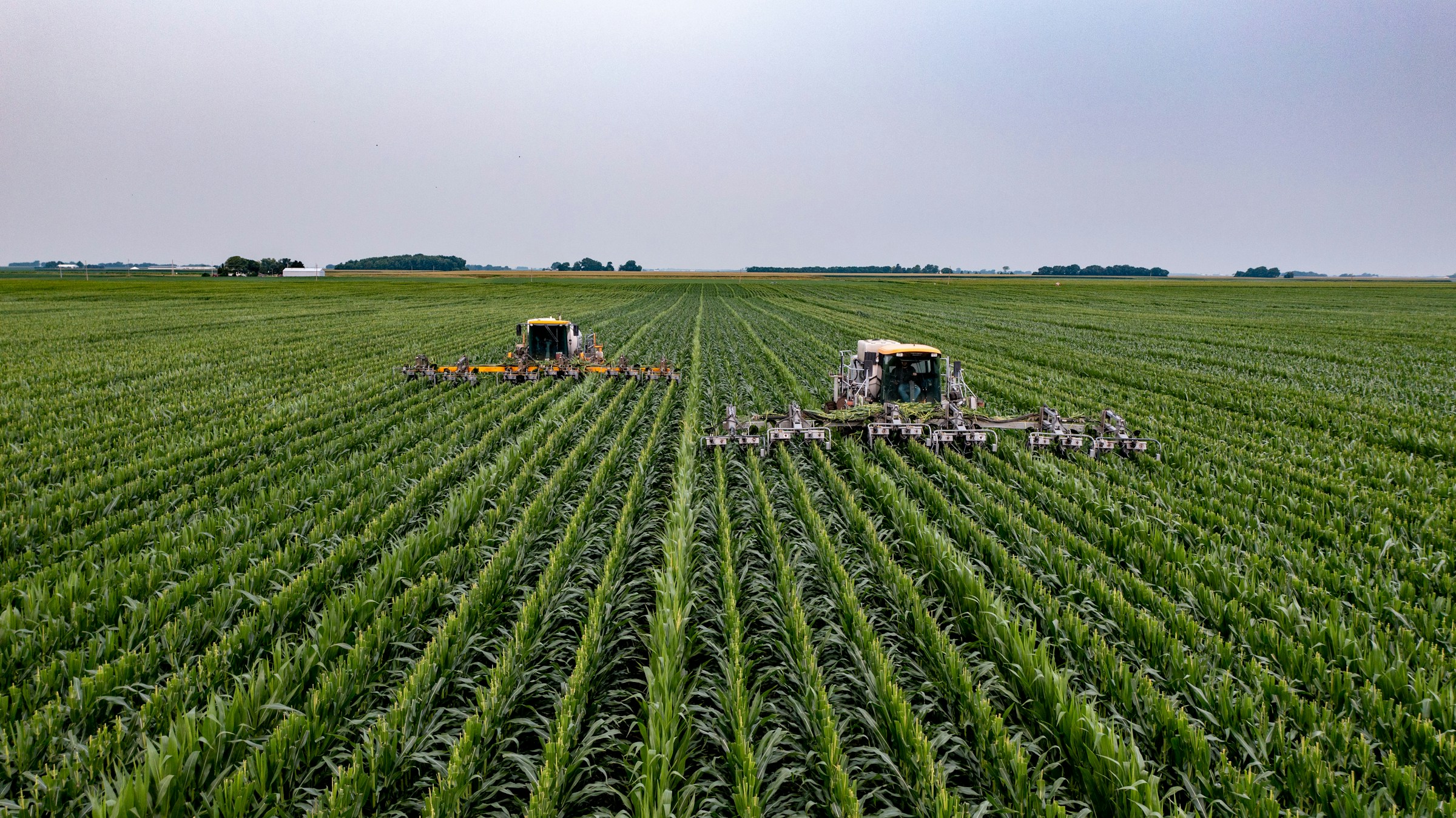Exploring Natural Farming in Modern Agriculture
Exploring Natural Farming in Modern Agriculture
Blog Article
Enhance Agricultural Efficiency With High-Quality Water Soluble Polymers
These polymers use a variety of advantages that can transform conventional farming approaches, from enhancing water retention and performance to maximizing soil structure and nutrient shipment systems. By taking advantage of the power of cutting-edge polymer services, farmers can potentially unlock new paths in the direction of achieving greater crop returns while alleviating environmental impacts.

Advantages of Water-Soluble Polymers
Water-soluble polymers offer a wide range of advantages in farming applications because of their boosted water retention residential properties and capability to boost soil structure. Agriculture. These polymers, when included in the soil, can dramatically enhance water holding ability, lowering the frequency of watering called for by plants. By forming a gel-like substance when combined with water, water-soluble polymers produce a reservoir that gradually releases wetness to plant origins, ensuring a more regular supply of water throughout dry spells
Furthermore, these polymers aid in preventing soil erosion by binding dirt particles together, thus boosting soil framework and security. Enhanced soil structure enables far better root infiltration and aeration, promoting much healthier plant development and greater crop yields. Water-soluble polymers likewise help in nutrient retention by minimizing leaching, ensuring that vital nutrients remain available to plants for a longer period.
Improved Water Retention and Performance
Enhancing agricultural water retention and efficiency via the unification of advanced polymer innovations has come to be a paramount emphasis in contemporary farming practices. Water-soluble polymers play a critical function in improving soil structure, enhancing water infiltration, and decreasing water dissipation prices. By forming a thin movie on the soil surface, these polymers help to prevent water runoff and raise the soil's water-holding ability, ensuring that plants have access to an appropriate supply of water.
Additionally, using premium water-soluble polymers can dramatically decrease the frequency of watering, as they boost the dirt's capacity to keep wetness for longer periods. This not only conserves water but additionally reduces the energy and labor prices related to irrigation techniques. In addition, boosted water retention and effectiveness cause much better nutrient uptake by plants, leading to enhanced crop returns and overall agricultural productivity.
Improved Nutrient Shipment Solution
Offered the significant impact of high-grade water-soluble polymers on improving water retention and performance in agriculture, the emphasis currently changes in the direction of enhancing nutrient shipment systems to further improve crop growth and yield. Boosted nutrient distribution systems play an important duty in making certain that plants get the essential nutrients in a type that is conveniently available for uptake, promoting their total health and performance. By including water-soluble polymers right into nutrient distribution systems, the performance of nutrient uptake by plants can be dramatically improved.
One trick advantage of utilizing top notch water-soluble polymers in nutrient shipment systems is their capability to control the launch of nutrients, making sure a constant and controlled supply to plants over an extensive period (Agriculture). This regulated release system helps avoid nutrient leaching and runoff, consequently taking full advantage of nutrient application by plants and reducing ecological influence

Dirt Structure Optimization Methods
Enhancing dirt framework is paramount in modern agriculture for maximizing plant yields and advertising lasting land monitoring methods. Soil structure optimization strategies play a crucial role in ensuring that dirt offers a suitable atmosphere for plant growth. One key strategy is the enhancement of raw material, such as garden compost or manure, which aids improve soil structure by enhancing its water-holding capacity and nutrient retention.
Furthermore, practicing minimum tillage or no-till farming can protect against dirt compaction and advertise the advancement of a healthy and balanced dirt structure. Cover cropping is an additional reliable method that entails growing crops particularly to secure and improve the dirt, stopping disintegration and improving soil framework.
In addition, executing plant turning strategies can assist break bug and condition cycles, while also improving dirt framework with the varying root structures of different plants. Overall, utilizing these soil framework optimization methods can cause raised farming performance, reduced ecological effect, and long-lasting sustainability in farming methods.
Sustainable Solutions for Crop Returns

To attend to the challenges of taking full advantage of crop returns while advertising lasting land management methods, exploring lasting remedies comes to be imperative in read review modern farming. One lasting solution for improving crop yields is the usage of precision farming methods.
Furthermore, advertising plant turning and cover chopping can help keep soil health and wellness, lower erosion, and boost nutrition biking, inevitably contributing to greater yields with time. Integrated bug monitoring techniques likewise play an essential function in lasting plant manufacturing by minimizing the reliance on chemical pesticides and advertising all-natural parasite control techniques.
Furthermore, spending in research study and development for creating drought-resistant crop varieties and climate-resilient farming practices can aid alleviate the effect of environment change on farming while ensuring constant yields when faced with ecological challenges. By adopting these sustainable remedies, farmers can accomplish higher plant yields while protecting the health and wellness of the land for future generations.
Conclusion
To conclude, making use of high-quality water-soluble polymers in agriculture provides many benefits such as better water retention, enhanced nutrient shipment systems, and enhanced soil structure. By implementing sustainable remedies for crop yields, farmers can considerably raise farming performance and efficiency. Agriculture. Water-soluble polymers provide a affordable and eco-friendly method to improve the total efficiency of farming methods, leading to better end results for both farmers and the atmosphere
These polymers offer an array of benefits that can revolutionize typical farming approaches, from boosting water retention and efficiency to maximizing soil framework and look at here now nutrient distribution systems.Additionally, these polymers assist in avoiding dirt disintegration by binding dirt bits with each other, thus improving dirt framework and stability. By creating a slim movie on the soil surface, these polymers help to avoid water runoff and increase the dirt's water-holding ability, making sure that plants have accessibility to an ample water supply.
Dirt framework optimization methods play an essential role in ensuring that soil provides a perfect setting for plant development.In verdict, the usage of top notch water-soluble polymers in agriculture provides many benefits such as better water retention, boosted nutrient delivery systems, and enhanced soil structure.
Report this page